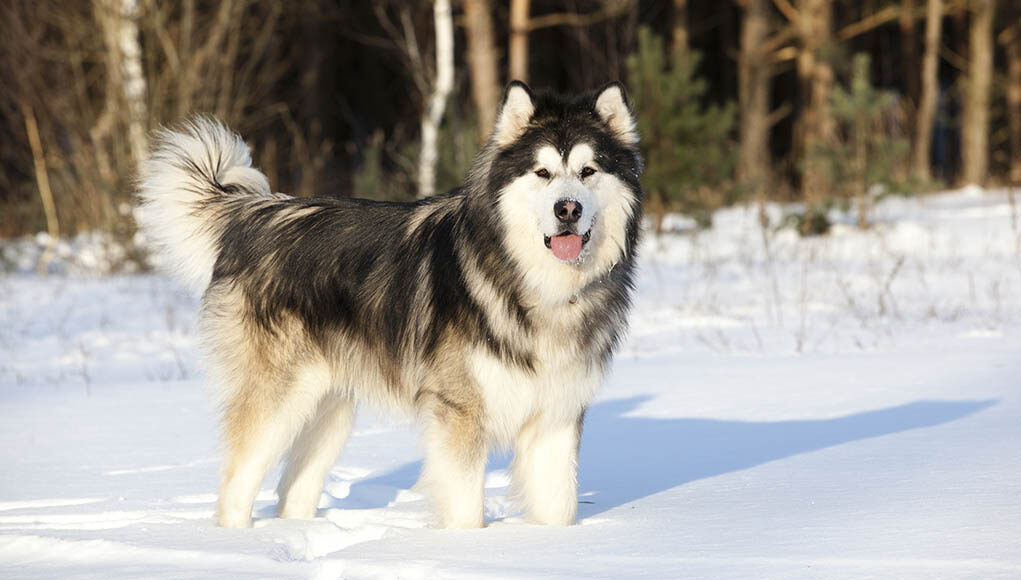Table of Contents
In this blog, we'll tackle everything you'll need to know about the Alaskan Malamute dog breed. These dogs are smart, loyal, and very affectionate.
This breed is a natural pack dog, Alaskan Malamutes are easily friendly with other dogs of its breed.
This breed is known to survive the harsh cold climate, and they can even survive the temperature 70 degrees below 0.
If you're the type of person that always like to cuddle, this dog breed might be the perfect match for you.
Originally bred to work various tasks needed in their cold region, such as hunting seals and pulling sleds, the Alaskan Malamute breed has come a long way.
Their powerful body is filled with stamina and strength. If you need something to be pulled through the snow or just want a cuddle buddy, these dogs are up for it.
However, keep in mind that these dogs are sensitive, and they need lots of attention and open space.
Alaskan Malamutes are not well-suited for apartment living, and owners spend most of their time at work.
Below, we'll discuss their physical appearance, temperament, health care, and more! But before any of that, let's first talk about their history.
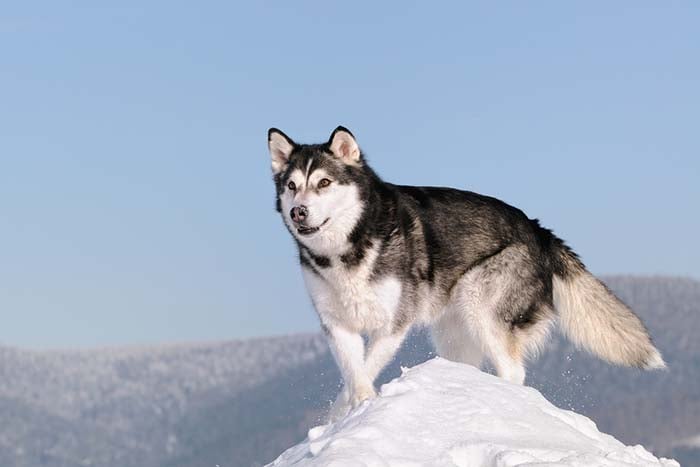
Alaskan Malamute History
The Alaskan Malamute dog breed is one of the oldest Arctic sled dogs. Thousands of years ago, these dogs helped native people cross the land bridge from Siberia to Alaska.
It is said that these dogs were developed by a tribe named Mahlemuts that lives in the northeastern area of the Seward Peninsula.
They were bred to hunt seals, fight off polar bears, and pull heavy sleds that were filled with food and camp supplies.
The Alaskan Malamute was first recognized during the Alaskan Gold Rush of 1896. This was when miners were willing to spend up to $500 for one dog to score in the dangerous wilderness.
During World War I, Alaskan Malamutes were shipped to France to deliver supplies to army outposts stationed in the mountains.
But in this day and age, the Alaskan Malamute is often mistaken for another dog breed that shares some physical features, the Siberian Husky, but here are some traits of the Alaskan Malamute that distinguishes it from the Siberian Husky.
Physical Traits of the Alaskan Malamute
Alaskan Malamutes are noticeably much larger and more muscular than others.
Their bones are much denser, and their muscles much leaner as well. This helps them move much easier when pulling sleds.
Male Alaskan Malamutes stand about 25 inches at the shoulder and weigh about 85 pounds. On the other hand, female Malamutes stand at 23 inches and weigh about 75 pounds.
But it is not rare to see an adult Malamute that is around 100 pounds. Some rare versions weigh about 140 pounds. These are called “giant” versions of the dog breed.
Another feature of Alaskan Malamute is their amazing woolly coats. This woolly coat is also double-coated, which functions as a body temperature regulator.
The outer coat is much shorter, denser, and thicker. This inner coat is about two inches deep. This is their protection against wetness and cold.
The Alaskan Malamute's tail is unique. Some Malamutes have a “cork-screw” like tail that enables them to place their tail over their nose to help them keep warm.
Their coat color, on the other hand, ranges from light grey to black, sable, and shades of sable to red. But their underbelly, feet, and other parts of their legs should be mostly white.
Moreover, black pigmentation is often found in arctic breeds like the Malamute. Because this is a trait that helps them protect their skin from harsh UV rays that reflect and bounce off the ice.
The Alaskan Malamute has a wide set of paw pads that help them stay above the ice with minimal sinking.
Their nails extend on the floor as it helps them grip firmly on icy and slippery ground.
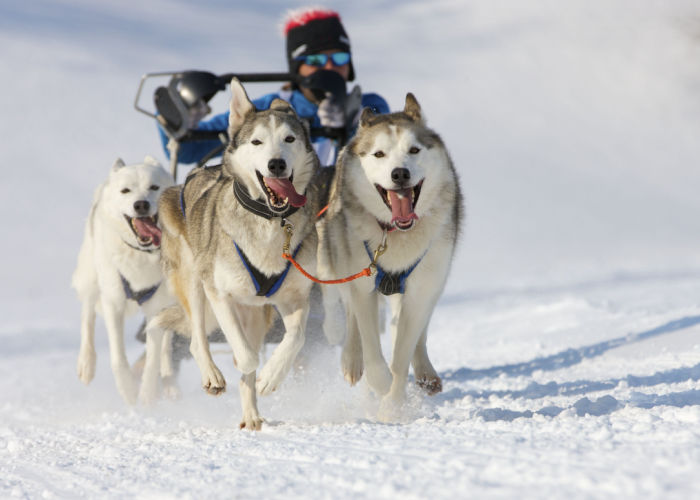
Alaskan Malamute Temperament
Alaskan Malamutes are smart and very affectionate dogs who deeply love their packs.
As we've discussed above, these dogs are also strong since they were bred to pull sleds and hunt. But now, they can make excellent family dogs.
These dogs are playful and very active. They are best paired with people who love to go on long walks, jog, hike, and sledding.
These dogs are not meant to be watchdogs as they greet everyone (even strangers) as a friend. But they are extremely loyal since they are pack animals.
One of their favorite thing to do is just to spend time with their family.
The temperament of a dog can be affected by numerous factors, such as genes, training, and socialization. But with proper care, your puppy is on its way to becoming a well-rounded dog
Also, keep in mind that Malamutes are not huge barkers. However, get ready because they are still very vocal. These dogs are howlers, and they make the “woo woo” sound loud.
Living with an Alaskan Malamute
Alaskan Malamutes are members of the Working Group dog breed. They are task seekers and thrive on physical activities such as walks and hikes.
If you're planning to adopt a Malamute, keep in mind that they require lots of space and time.
They also love to dig. Rather than forcing this habit to stop, it's best advised just to give them his place where he can dig. Try a sandbox or an area in your yard where you wouldn't mind them making a mess.
Malamutes are also sensitive to heat. Since they are Arctic dogs, these dogs are not suited to live in hot or humid places. Also, avoid exercising when the sun is at its peak.
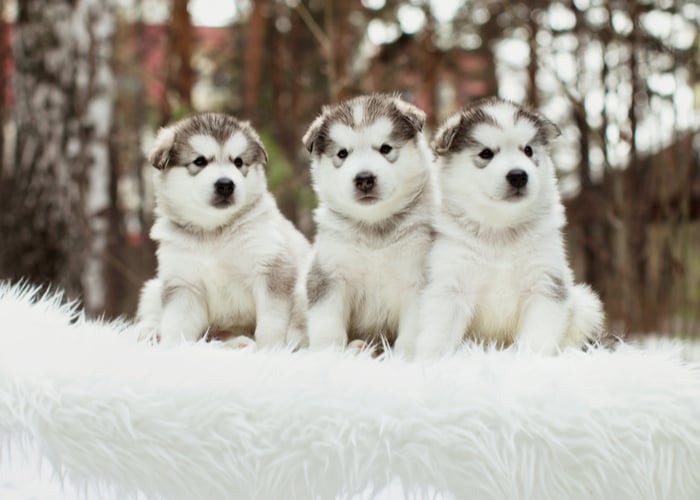
Training & Exercise
Just like any dog breed, training, and exercise are crucial when it comes to owning a dog.
If you're the type of person that works all the time, this might not be the dog for you as they require plenty of attention and they need their daily exercise to avoid boredom.
Boredom in these kinds of dogs can lead to destructive behaviors. You don't want to come home to your house trashed, right?
Exercise is also key to maintaining their health and reducing the chances of multiple health problems in the future.
Malamutes enjoy running, and they usually bounce around a lot. Play and spend time with them to strengthen your bond.
When it comes to training a dog, it's best to start early. Early socialization and training can help them get along with other dogs and pets.
Due to their size, power, and intelligence, it's recommended that Alaskan Malamutes are enrolled in obedience training at an early stage.
You wouldn't want to train them when they are big and strong enough to outmaneuver you.
Alaskan Malamute Health Care
Generally, the Alaskan Malamute is a healthy dog breed. But just like any other dog breed, they are prone to certain health problems.
This doesn't mean that your Malamute will get any of these illnesses. However, as pet owners, we need to be aware of them.
If you're trying to adopt a Malamute puppy, find a reputable breeder. Responsible breeders can give you health clearances for the puppy and its parents.
Below, we've gathered a few health problems that Malamutes are prone to.
Eye Problems
Cataracts
A cataract is an obstruction of lens fiber in the lens of an eye. The gradual clouding of the lens in the eyes.
Although this is more common in elderly dogs, it can also be acquired through genetics, traumatic injuries in the eyes, nutritional deficiencies, or diabetes.
Some Alaskan Malamutes may get Cataracts as early as 2 years of age. Cataracts are also one of the common causes of Alaskan Malamute blindness.
Have your pet get an ophthalmic examination to detect small cataracts as early as they step four to five years old.
To determine whether it is blinding or not, it is better to check with your veterinarian to be informed what procedure should be done.
Hermeralopia
Hermeralopia is the condition where the dog’s cones in the retina are progressively weaker, especially in the daylight.
Their eyesight returns to normal in dimmer lights or the nighttime. Symptoms seen often in dogs are disorientation and bumping into things in broad daylight.
Although there is no known treatment as of today. Owners may help their Alaskan Malamute by guiding them in the daylight and familiarizing the surrounding during dimmer lights.
Owners should avoid exposing their Alaskan Malamute’s eyes to harsh sunlight.
If the Alaskan Malamute is found to be diagnosed with either of these eye problems, it’s best not to have them breed as it can be inherited by the offspring.
Chondrodysplasia (Dwarfism)
Chondrodysplasia is a condition where the bones and the cartilage development are incomplete or disrupted, thus making it disproportionate and short. It is a recessive genetic mutation found in dogs.
Although Chondrodysplasia is more common in inbreeds like Spaniels, Corgis, Retrievers, Terriers, and more, some Alaskan Malamute may still obtain this condition.
Unfortunately, there is no definite treatment for Chondrodysplasia.
The veterinarian may recommend tests, medication, and physical therapy specifically for their condition.
Owners must follow the veterinarian’s instruction and recommendation considering this condition may be painful.
Hip Dysplasia
Hip Dysplasia is a genetic condition wherein the socket of the joint and ball becomes distorted.
When diagnosed with elbow and or hip dysplasia, it’s important to keep their weight in the normal range and have them exercise with activities that promote joint therapy.
Malamutes have naturally denser and thicker bones and muscles. If their weight is over the standard, they may develop problems in the bone and joint as it is the most strained during activities.
Veterinarians may prescribe medications for anti-inflammatory/ pain relievers and supplements. Prevention is the same, keeping them active but not injuring them as well.
A treadmill walk or swimming is perfect for prevention and recovery as well.
Heatstroke
Heatstroke is a condition wherein the body cannot control high temperatures and cannot dissipate the heat on its own.
Alaskan Malamutes are breeds that are accustomed to very low temperatures. They are not as tolerant of heat as they are to cool weather.
Dogs who are experiencing heatstroke must immediately seek first aid and medical help. Prolonging the effect may affect the dog’s overall health.
Hypothyroidism
Hypothyroidism is the static function of the thyroid gland. Metabolism is slowed down if diagnosed. The immune system attacks the thyroid gland as it does not recognize it. Usually, this is an inherited disorder.
For Alaskan Malamutes who are experiencing lethargy, slow heart rate, weight gain, excessive shedding, and high cholesterol, it’s best to have them tested by the veterinarian.
The veterinarian may provide maintenance and recommended diet. It’s best to have this condition checked and addressed immediately.
Polyneuropathy
Polyneuropathy is a condition wherein the dog the peripheral nerves are deteriorating progressively, which affects mobility and tolerance to pain.
Symptoms are getting easily exhausted, noisy breathing and difficulty in breathing, changes in barking, and weakness of the legs and muscles. There has been no effective treatment for polyneuropathy, some
Von Willebrand’s Disease
Von Willebrand Disease is a bleeding disorder in dogs and humans that is caused by a lack of protein in the blood.
The lack of protein disables clotting when open wounds and may result in blood loss.
Some symptoms may be sustained bleeding after surgery or trauma. Another is hemorrhage from various body parts, including the nose, oral mucous membrane, urinary bladder, and vagina.
Owners should check with their veterinarians for tests and further consulting regarding precautionary measures they have to take with Alaskan Malamutes who have the disease.
If the disease has taken place and is not addressed immediately, it may become fatal for the dog.

Grooming
One of the biggest challenges when it comes to owning a Malamute is its extensive shedding.
It is best advised to give your Malamute daily brushing and vacuuming to keep their fur under control.
Alaskan Malamutes rarely need a bath since their coat is a double coat, and grime, dust, and other dirt don’t easily stick.
It’s important to keep the Alaskan Malamute’s ears dry after a bath. Since their ears also have a bit of fur on the pinna, it may accumulate moisture, grime, and bacteria if left damp.
Alaskan Malamutes should have their teeth cleaned regularly. Owners may use a brush and toothpaste or dental chews to keep their oral health in shape.
Alaskan Malamutes may also have their nails trimmed or filed weekly. Since their nails play an important part in gripping the ground, owners may file them if necessary instead.
Some Alaskan Malamutes may become difficult when it comes to grooming. Owners may also hire a professional groomer if they’re unable to groom the dog themselves.
Owners may introduce a grooming regimen to their Alaskan Malamutes while they’re still puppies.
Frequently Asked Questions
Are Alaskan Malamute good family dogs?
Alaskan Malamutes can be great family pets with proper training and socialization.
However, if you have children or live with children, they can easily overwhelm them due to their large size.
That's why as parents, we must supervise all of their interactions. We should also teach our children how to interact or play with dogs properly to avoid unwanted biting and ear-pulling on both parties.
Is A Malamute a wolf?
The Alaskan Malamutes are considered wolf dog breeds. They are Arctic sled dogs descended from wolves and they still look a lot like wolves to this day.
But over the years, they have evolved into domesticated and great companion dogs.
Can Alaskan Malamutes be left alone?
It is not advised to leave your Alaskan Malamutes alone all day. They enjoy your love and companionship.
Attention, mental stimulation, and exercise are necessities for these dogs so they can be satisfied and healthy.
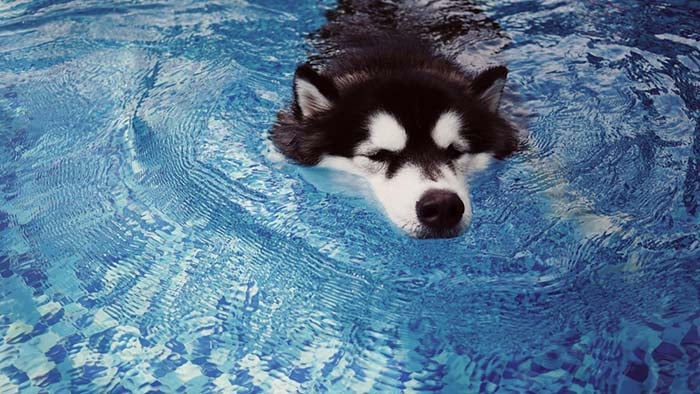
Alaskan Malamute Dog Breed Profile: Final Thoughts
The Alaskan Malamute dog is a strong and heavy-duty worker dog breed. But at the same time, they are affectionate, loyal, and playful, and they love to be around their pack all the time.
They are one of the oldest sled dog breeds in the Arctic. It is believed that they were descendants of the domesticated wolf-dogs.
Long ago, Alaskan Malamute puppies were bred to become hunting partners for seals and polar bears, and they were also used for hauling heavy loads in the snow.
Malamutes are active dogs because of their working backgrounds. They love to run, pull, and dig.
Unfortunately, they don't make good watchdogs as they treat every human as a friend.
If you're looking to adopt an Alaskan Malamute, it's best advised to keep them in cooler environments as they don't do well in the heat.
And just like any other dog, proper training, exercise, and socialization are required.


